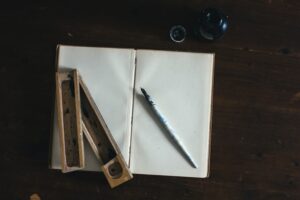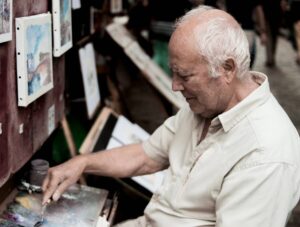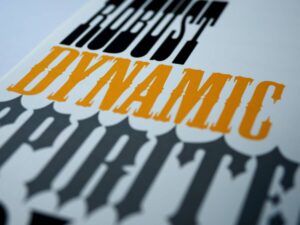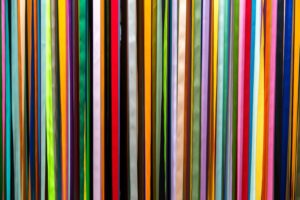A fat stack of art history books has magical powers. Not only do they have seductive glossy pages and that new book smell, but they can help you refine your technique, inspire new works, and even help you beat creative blocks.
If you’re a self-taught artist, you’ve done an amazing job at learning and finessing your skills. And getting into the history and theory of art can help you to take your work to the next level.
In our post Road-Map to Become a Successful Self Taught Artist (yourartempire.com), we suggested that you copy art by the masters as a great exercise in developing your technique.
This can have a big impact on your art, giving you ideas on how to compose an image as well as the technical aspects of making it in paint, pencil, or ink.

And it also helps us to understand why art was made the way it was – the science, philosophy, and society that impacted the work.
You might find artworks that you love, you might find artworks that infuriate you. And that’s important. The best art history books spark ideas and are rich sources of inspiration for creative people.

We’ve pulled together a list of the best art history books to help you to develop your art. This is a great starting point for getting into art history. And many of these titles are found on visual arts degree reading lists, so we’re practically giving you a free BA 😉.
15 of the Best Art History books
- For taking a look at key art pieces through time
The Art Book is probably the best introduction to art history that an artist can buy. It includes 100 artists, which span all periods and reach across the world. What makes it so compelling is its format – each artist is represented by a good-sized, full-color image of their work, accompanied by a short text, so you can flick through and quickly get a feel for how art changed over time. It comes in a practical pocket edition, and it’s cheap, so you don’t mind so much if it gets covered in paint or a bit battered. And it will – because you’ll refer to this one time and time again.
- A stunning, visual guide to movements and eras in art
Art: The Definitive Visual Guide
Andrew Graham Dixon’s ‘Art: The Definitive Visual Guide’ is the next step in your voyage into art history. This beauty explains key movements and works in art, with really helpful and engaging texts and stunning timelines of images.
- For a more detailed look at some famous names
So by now, you’ll have an understanding of the historical framework of art history movements, and Simon Schama will help you to get to grips with applying this newfound knowledge to famous paintings. This book goes into deep detail on 8 world-class works, with Schama’s trademark passion and expertise.
- For adding depth to your knowledge
This is one of the most famous art history texts of all time, and gives a comprehensive look at art history and is groundbreaking as it introduces art criticism in an accessible, unpretentious way. An absolute must read on our best art history books list. The book was first published in the 1950s and while it has been updated, it is still a classic which is very much of its time – with just one female artist, and few non-white artists listed in its 650 or so pages.
- For if you want to get serious about your scholarship

Gardner’s Art Through the Ages: A Global History (Mindtap Course List)
‘Gardner’s Art Through The Ages’ is the art history time to end them all. It is, however, a. massive and b. really expensive. Yet, it’s widely used by universities for good reason, and if you are keen to add depth to your knowledge (and bling to your bookshelf) it’s well worth considering.
- An incredibly useful reference book
The Oxford Dictionary of Art and Artists 4/e (Oxford Quick Reference)
Reading a newspaper article and baffled by the terminology? Want to add expertise when writing for a specialist audience? Turn to the Dictionary of Art and Artists. Probably most helpful, knowing the specialist terminology can help you to research your technique and push your artwork on. Get your index tabs out, you’re going to be needing LOTS of them.
- A spotlight on illustration
Fifty Years of Illustration (2014-10-28)
Getting into more specialist histories of different art forms, this is a really great book on the history of illustration. And whether you’re an illustrator or not, this book is well worth a read as it is both beautiful and fascinating. Learn about the leading illustrators, see their art, and discover how the art form has evolved since the 1960s – and how it has contributed to the evolution of our visual language.
- A history of fonts and lettering

Just My Type: A Book About Fonts
Just My Type is a page-turner for anyone interested in visual communication in general or those creatives who have a particular interest in typography design. This is a collection of histories about the fonts that we all know and use every day. It will make you look at the world a little bit differently (and maybe pick a different typeface for your next project).
- For a detailed background information on graphic design
The History of Graphic Design: Volume 1 (1890-1959)
This is the first, and so earliest, of a two-volume history of graphic design. Plentiful, glossy images are combined with historical information and facts that place the designs in their wider context. A phenomenal source of reference images and inspiration.
- A quirky look at color

The Secret Lives of Colour is a bestseller and we can’t recommend it highly enough. It explores 75 different colors through stories, anecdotes, and technical details. These descriptions are fascinating, but not only that, the book design is glorious, too. This is a sure-fire pick-me-up and an excellent book for artists needing to find new inspiration.
- A great introduction to art theory
Ways of Seeing (Penguin Modern Classics)
A really, really great introduction to art theory. Ways of Seeing is a hugely influential book that made art theory accessible. It not only explains pictures in terms of their historical narrative but also adds ways of thinking about the works and understanding them. Crucially, it gives you some great tools to develop and challenge your own ideas about art.
- Good underpinning, includes critical texts
The Art of Art History A Critical Anthology n/e (Oxford History of Art)
One for if you enjoyed John Berger. The Art of Art History offers a selection of texts by key writers from the past 200 years, on a range of key art history topics, offering a great introduction to wider writers and ideas.
- Getting critical about art history

Art History: A Critical Introduction to its Methods: 2nd Edition
Now we’re getting to the nitty-gritty. Adding to your understanding of art, its movements through time and geography, how these contexts influence individual works, and new ideas on art theory, this book will introduce some of the methodologies used in the study of art history – and how these may influence your own understanding of the field.
- For testing your ideas – a provocative view of art history
And bringing it all together is The Painted World by Tom Wolfe. This provocative book picks apart art theory and modern art and is both insightful and inciteful. Wolfe argues that art is made for theory, and is made for a few people who are in the know while being generally inaccessible for everyone else. Whether you agree or not, it’s an interesting argument and one that questions what we value about our art and what we hope to achieve by making it.
- And finally…

Because, cats. Enjoy!
Conclusion
By finding small ways to learn about art history, you can start to understand a vast pool of knowledge.
This can help challenge your ideas, inform your technique, or even reignite your inspiration if you have a creative block.
By learning about the artists that have come before you, you can feel more connected to art and find your own place in its history.
We hope that our list of the best art history books has helped you to discover some historic artworks that you love. Let us know in the comments…



